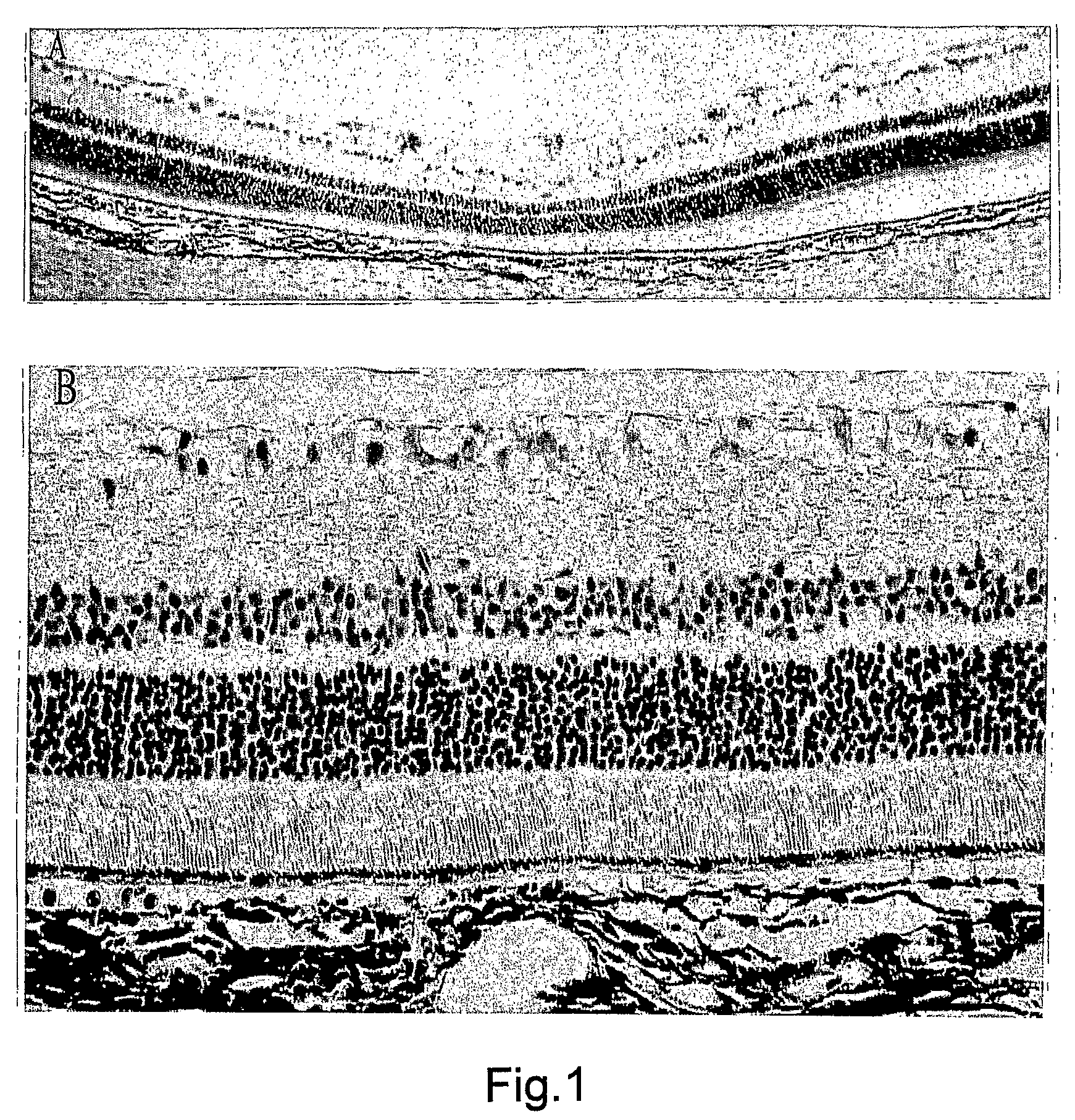Staining composition for staining an ophthalmic membrane
a technology of ophthalmic membrane and staining composition, which is applied in the direction of luminescence/biological staining preparation, drug composition, biocide, etc., can solve the problems of difficult removal of membranes, retinal damage, and difficulty in creating continuous curvilinear capsulorhexis (ccc) in eyes with white mature cataracts
- Summary
- Abstract
- Description
- Claims
- Application Information
AI Technical Summary
Benefits of technology
Problems solved by technology
Method used
Image
Examples
example 1
Screening Various Dyes as a Candidate Focusing on their Safety and Ability to Stain Membranes
[0202]In order to provide a staining composition for achieving such aims, all dyes, including dyes currently not being utilized for organisms were used, and they were then screened for candidate dyes. The dyes screened are Evans blue, Acid blue 9, Fast green, Brilliant Blue FCF, Indigo-carmine, methyl blue, methylene blue, Brilliant Blue G (BBG). Additionally, as the screening conditions, safety and staining-affinity were especially noted.
[0203]Among some of the leading candidates, those that showed superiority in safety but inability to dye the target object, or in the reverse, those that showed good staining but virulence to the retina, were removed from candidacy.
[0204]Safety assessments were then conducted, using rats, of the narrowed down candidate dyes. Based on higher staining-affinity and safety, BBG became the final candidate.
[0205]Next, in order to examine the optimal conditions of...
example 2
2. Effects of the Intravitreous BBG on the Retina
[0206]All procedures conformed to the Association for Research in Vision and Opthalmology (ARVO) statement for the Use of Animals in Ophthalmic and Vision Research and the guidelines for animal care at Kyushu University, Fukuoka, Japan.
2.1 Characterization of the BBG Solution
[0207]BBG is also known as Acid Blue 90 and Coomassie Brilliant Blue G. Aside from our previous publication, there are no reports investigating the toxicity BBG for ophthalmic use. Table 1 shows the osmolarity and pH of the BBG solution at different concentrations. The osmolarity and pH of BBG was found to be similar to those of intraocular irrigating solutions.
[0208]
TABLE 1solutionOsmolarity (mOsm / KgH20)pHcontrol2987.33BBG 10 mg / ml3107.41BBG 1.0 mg / ml3007.42BBG 0.1 mg / ml2987.41BBG 0.01 mg / ml2987.41saline2857.4BSS3057.1plus (Registeredtrademark)Control shows OPEGUARD ® - MA.
2.2. Surgical Procedure for Intravitreal BBG in Rat Eyes
[0209]Brown Norway rats (n=78 males...
example 3
3. Interventional Clinical Case Series of BBG as a Potential Staining Solution for Membrane Peeling
[0222]Indocyanine green (ICG) and Trypan Blue (TB) staining have greatly facilitated ILM peeling in various vitreo-retinal diseases. However, numerous reports have recently emerged regarding retinal damage caused by ICG and TB both in experimental and clinical use.
[0223]From the preclinical study, BBG was selected as a candidate dye for ILM staining. This is apparently the first clinical investigation of BBG in human eyes. This is the first known clinical investigation of BBG in human eyes.
3.1. The Use of BBG in ILM Staining and the Effects and Safety in Human Eyes (the First Attempt)
[0224]Sixteen eyes of 16 patients with a macular hole (MH) and epiretinal membranes (ERMS) were recruited from the outpatient unit of Kyushu University Hospital (Fukuoka, Japan) between August and September 2004. Patients with ocular diseases such as glaucoma, uveitis, and corneal disorder were excluded. C...
PUM
| Property | Measurement | Unit |
|---|---|---|
| concentration | aaaaa | aaaaa |
| concentration | aaaaa | aaaaa |
| concentration | aaaaa | aaaaa |
Abstract
Description
Claims
Application Information
 Login to View More
Login to View More - R&D
- Intellectual Property
- Life Sciences
- Materials
- Tech Scout
- Unparalleled Data Quality
- Higher Quality Content
- 60% Fewer Hallucinations
Browse by: Latest US Patents, China's latest patents, Technical Efficacy Thesaurus, Application Domain, Technology Topic, Popular Technical Reports.
© 2025 PatSnap. All rights reserved.Legal|Privacy policy|Modern Slavery Act Transparency Statement|Sitemap|About US| Contact US: help@patsnap.com



